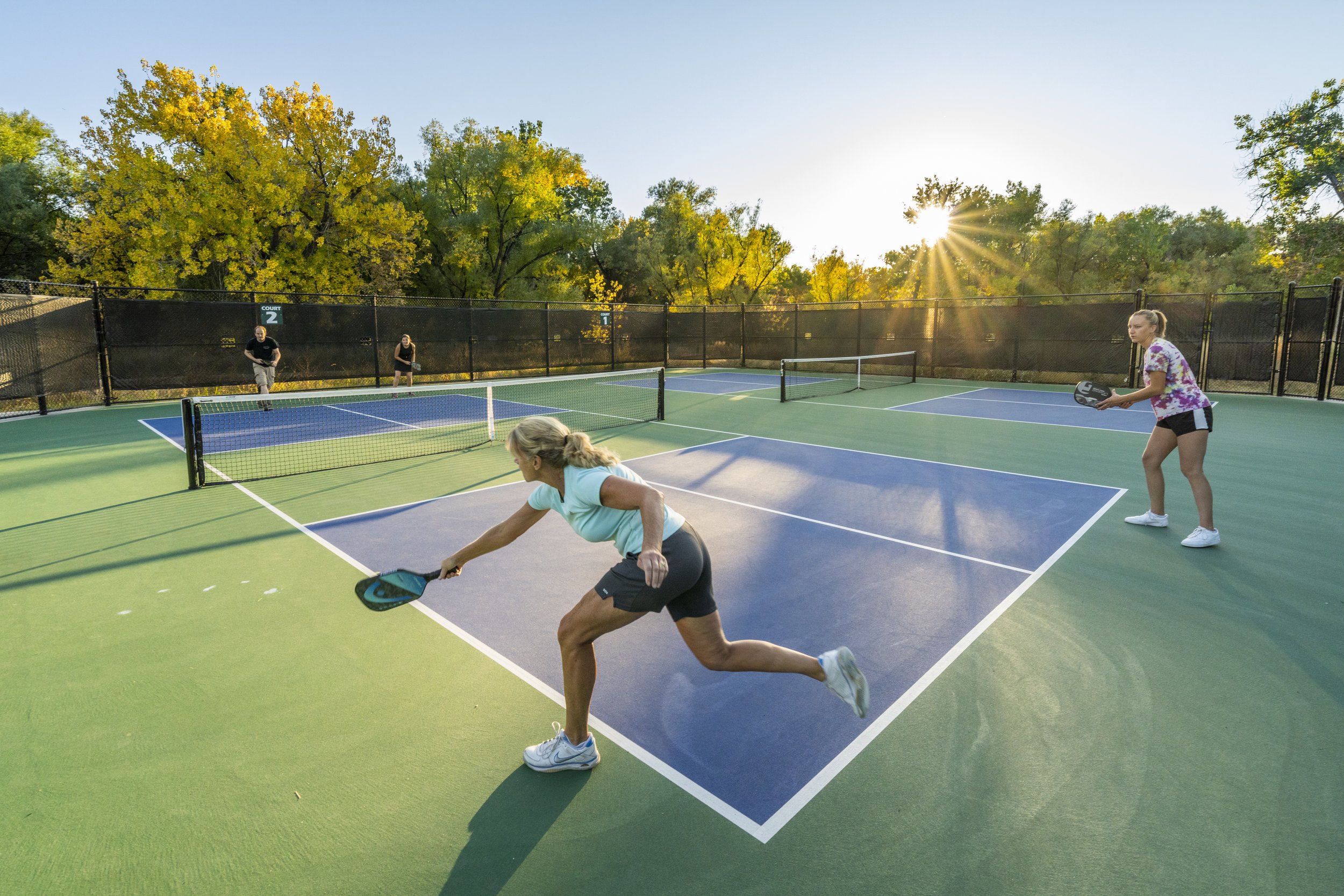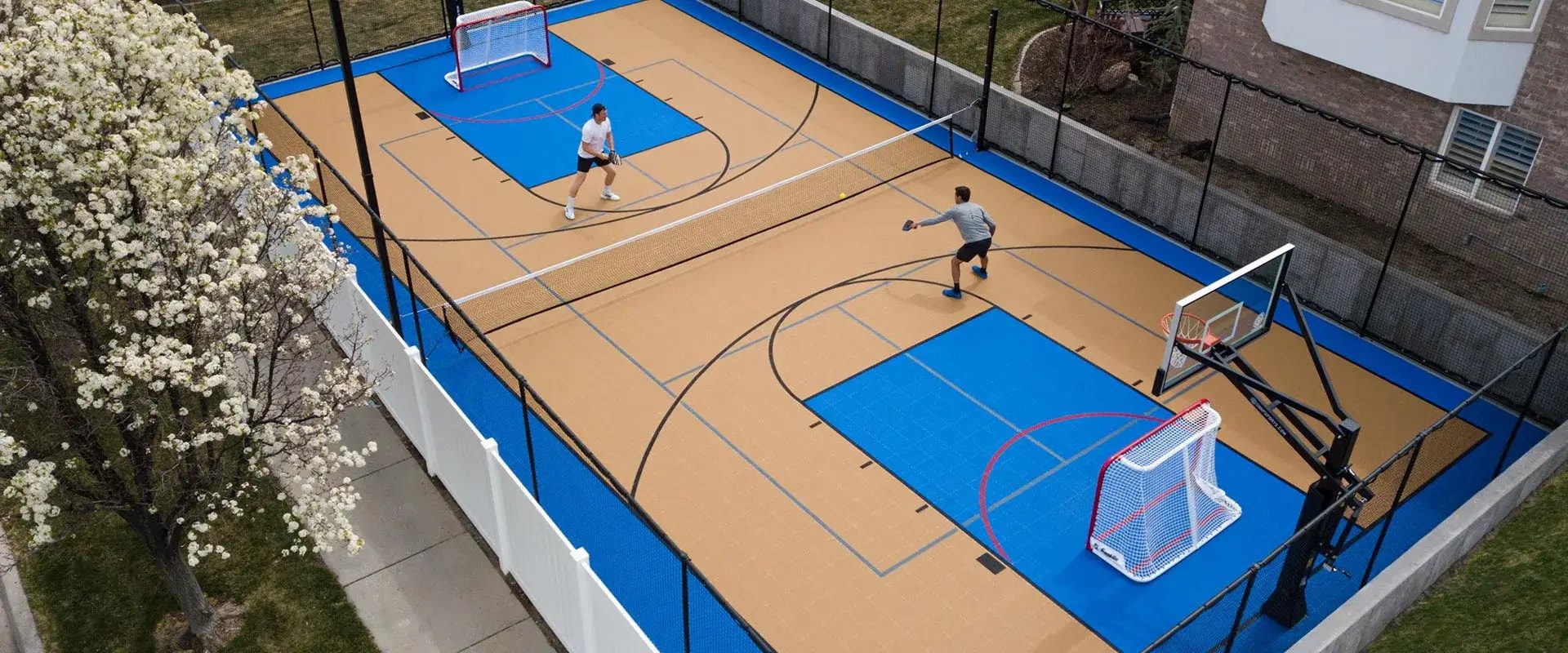How Illinois and Midwest are Leading the Way in Pickleball Judiciaries Layout & Building
How Illinois and Midwest are Leading the Way in Pickleball Judiciaries Layout & Building
Blog Article
Key Elements in the Building of Pickleball Judiciaries: From Website Choice to Final Surfaces
The building and construction of pickleball courts includes a series of essential aspects, starting with the option of an appropriate site that stabilizes access with ecological factors to consider. Crucial elements such as court dimensions, surface area materials, and drain systems considerably influence not just the high quality of play but also the durability of the center. Additionally, interest to lights and completing touches can boost the general experience for players and viewers alike. Recognizing exactly how each of these parts interrelates may reveal insights that are usually forgotten, motivating a more detailed evaluation of finest methods in court construction.
Site Choice Standards
When starting the building and construction of pickleball courts, it is important to pin down the website selection standards that will certainly make certain optimum playability and ease of access. The place should be easily obtainable for players, ideally situated near suburbs or recreation center, to encourage participation.
Furthermore, the surface must be level and stable, as unequal ground can result in safety threats and affect gameplay. Sufficient water drainage is likewise important; choosing a website with great water runoff will certainly assist maintain court problems throughout unfavorable weather.
Another vital factor to consider is the accessibility of utilities. Accessibility to power and water is required for lighting and upkeep purposes. Furthermore, proximity to vehicle parking facilities is necessary, assisting in easy accessibility for players and viewers alike.
Environmental elements can not be overlooked; natural color from trees can improve gamer convenience, while direct exposure to prevailing winds might disrupt play. Zoning laws and community assistance should be taken into consideration to guarantee that the project lines up with local guidelines and obtains the support it needs for successful application. By thoroughly assessing these criteria, stakeholders can create a welcoming and useful environment for pickleball fanatics.
Court Dimensions and Design
To make certain optimum gameplay and adherence to laws, the measurements and design of pickleball courts must be very carefully specified. A basic pickleball court determines 20 feet in width and 44 feet in length for both singles and doubles play.
The net elevation is evaluated 36 inches at the sidelines and 34 inches at the facility, developing a mild dip that influences ball trajectory. Court markings are equally important; lines should be 2 inches vast and distinctive in shade to make sure exposure.
Furthermore, a buffer area bordering the court is a good idea, commonly expanding 5 to 10 feet beyond the sidelines and baselines to accommodate gamers' activities and improve security. Correct format and measurements not only ensure conformity with official policies yet additionally improve the total having fun experience, fitting both leisure and competitive play. Mindful planning in these locations is extremely important to the successful construction of pickleball courts.
Surface Area Material Options
Picking the ideal surface product for pickleball courts is vital for guaranteeing optimum player efficiency and safety and security. The option of surface can dramatically impact gameplay, consisting of sphere bounce, grip, and player convenience.
There are a number of choices available, each with its unique characteristics. Asphalt is a prominent choice because of its resilience and reduced maintenance needs. It offers a strong playing surface area that can endure numerous climate condition but might call for periodic resurfacing.
Concrete navigate here is one more widely utilized product, offering exceptional long life and a smooth finish. It enables regular ball bounce however can be tough on players' joints, making it less preferable for lasting play without proper cushioning.
For those looking for boosted convenience and shock absorption, supported acrylic surface areas present a practical choice. These surface areas combine a base layer with an acrylic topcoat, supplying boosted grip and a softer feeling, which is useful for lowering the danger of injuries.
Last but not least, artificial turf is acquiring traction, especially for multi-purpose facilities. Its flexibility and lower upkeep needs make it an eye-catching choice, though it may not give the very same round action as traditional difficult courts. Mindful consideration of these alternatives will guarantee an ideal playing atmosphere.
Drain and Lighting Considerations
Proper water drainage and efficient lights are important elements in the building and construction of pickleball courts, dramatically influencing both playability and safety. Ample drain systems avoid water buildup, which can lead to slippery surface areas and damage to the court structure.
Lights is equally important, particularly for courts planned for night use. The placement of lighting fixtures ought to be purposefully prepared to get rid of darkness and offer even circulation of light throughout the court.

Final Finishes and Maintenance
After dealing with drainage and lights factors to consider, focus directory transforms to the last coatings and recurring upkeep of pickleball courts. Illinois and midwest. The selection of surface material is essential, as it influences both playability and resilience. Common options include acrylic coatings and specialized sports surface areas that give optimum grip and padding. These surfaces ought to be applied in multiple layers to make certain resilience versus climate elements and put on.

Seasonal upkeep may consist of resurfacing every couple of years, depending on use and environmental aspects. Properly preserving nets, court lines, and surrounding locations is equally essential to give a risk-free and delightful playing experience. By purchasing top quality finishes and adhering to an organized upkeep timetable, facility owners can guarantee their pickleball courts remain in outstanding problem for years to come.
Final Thought
Finally, the successful view it building of pickleball courts rests on thorough interest to a number of vital factors. Site choice must focus on accessibility and terrain stability, while court dimensions and design need to follow optimum criteria for gameplay. The choice of surface material substantially affects gamer safety and security and efficiency. Effective drainage and adequate lighting add to court long life and presence. Ultimately, top quality coatings and a durable upkeep routine are vital for protecting the court's condition, enhancing the overall experience for gamers and viewers alike.
Report this page